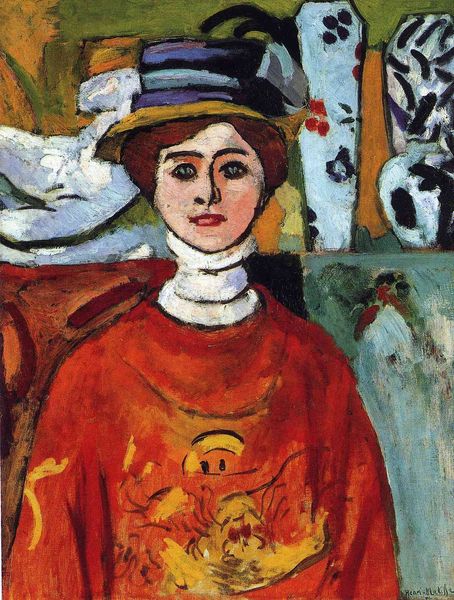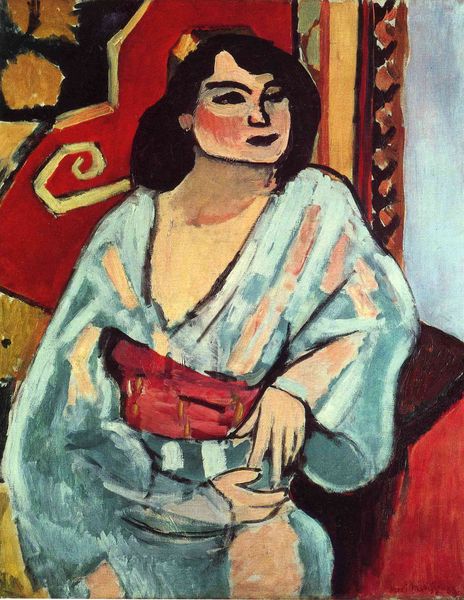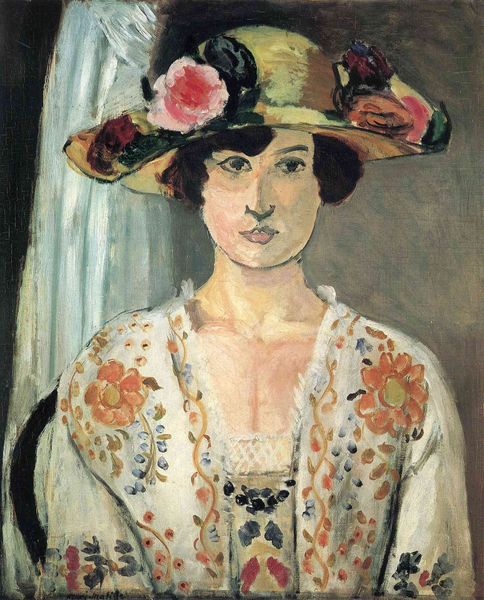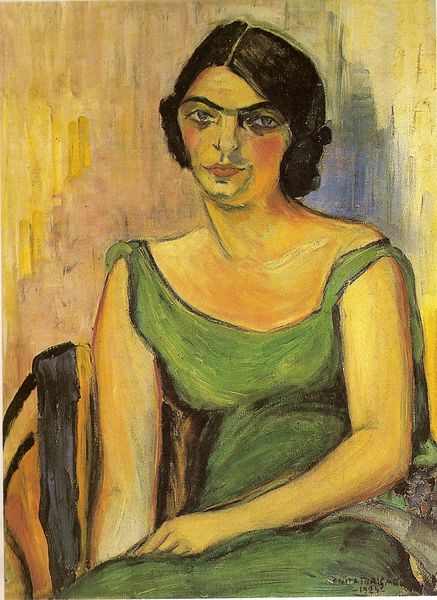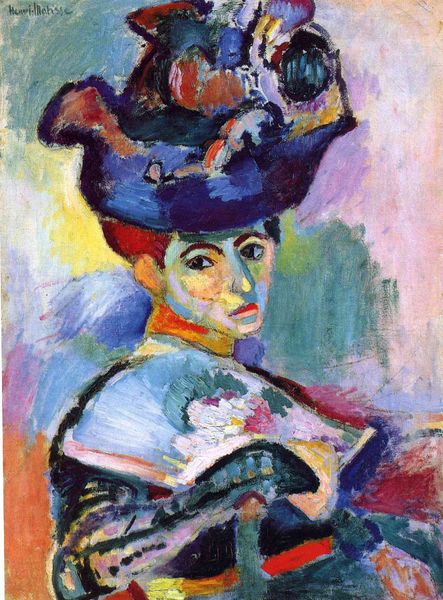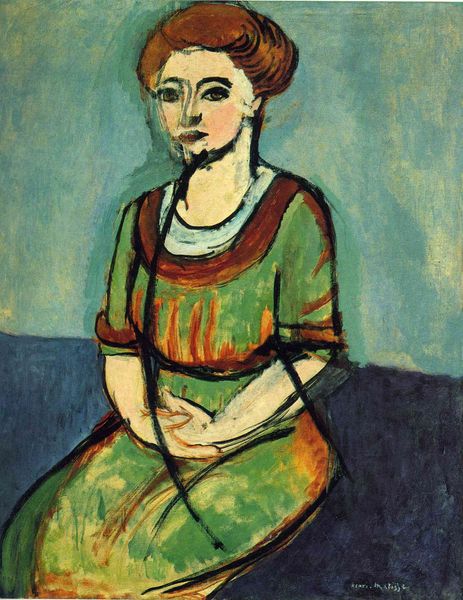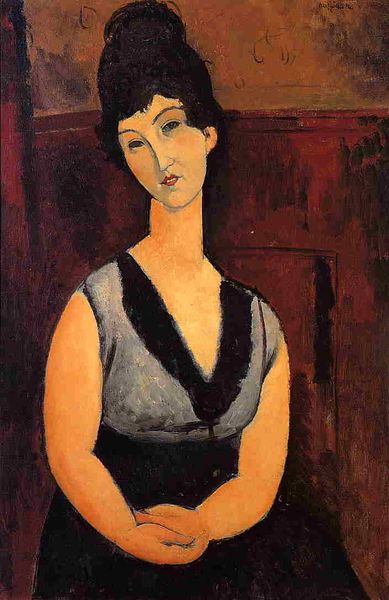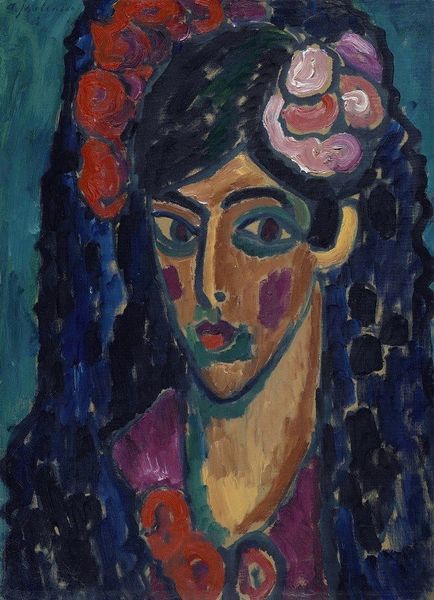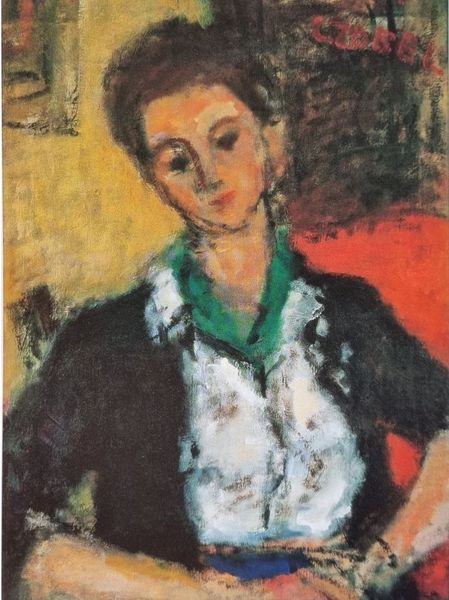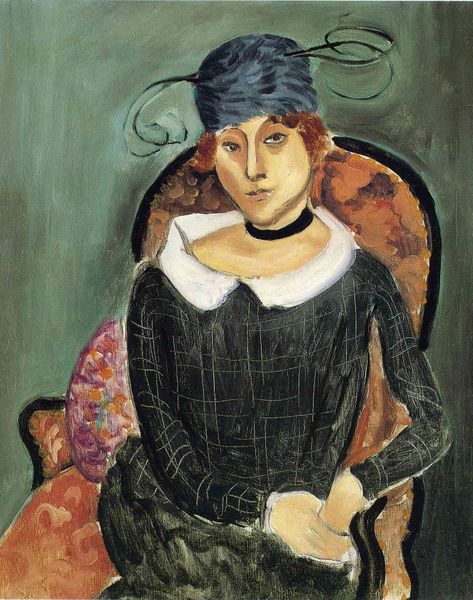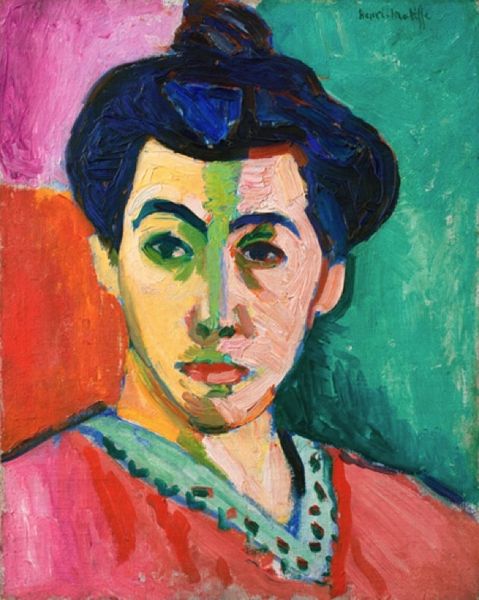
Copyright: Public domain US
Editor: Here we have Henri Matisse's 1906 oil painting, "The Idol." I’m immediately drawn to the non-naturalistic colors and the almost flattened perspective. What elements stand out to you as you interpret this painting? Curator: Observe how Matisse utilizes color and form to generate meaning. Note the juxtaposition of cool blues and warm reds—do they not establish a sense of visual tension, animating the picture plane? Consider the structure of the composition itself. How do these formal elements speak to a certain idea or meaning? Editor: I notice that, especially in the background, colors aren’t blended; they're applied in these visible strokes, creating a vibrant, almost mosaic-like surface. Does this distinct approach highlight or obscure the subject, in your opinion? Curator: Ah, indeed! Notice how the bold brushstrokes delineate form and create an impression of movement. This emphasis on the materiality of paint is fundamental to Fauvist aesthetics. To answer your question, consider that such non-naturalistic applications draw attention to painting itself, emphasizing its two-dimensional nature. How might the subject matter - the model, perhaps - intersect with, or depart from, that construction? Editor: That makes sense. I was so focused on the colors that I almost overlooked that. It seems as though the formal elements serve to flatten the figure rather than render it in a traditional, representational way. I appreciate the insight into the importance of the formal qualities of this piece, not just as a portrait, but as a commentary on painting itself. Curator: Precisely! Seeing the work through its form, one gains a more thorough, analytical appreciation.
Comments
No comments
Be the first to comment and join the conversation on the ultimate creative platform.
